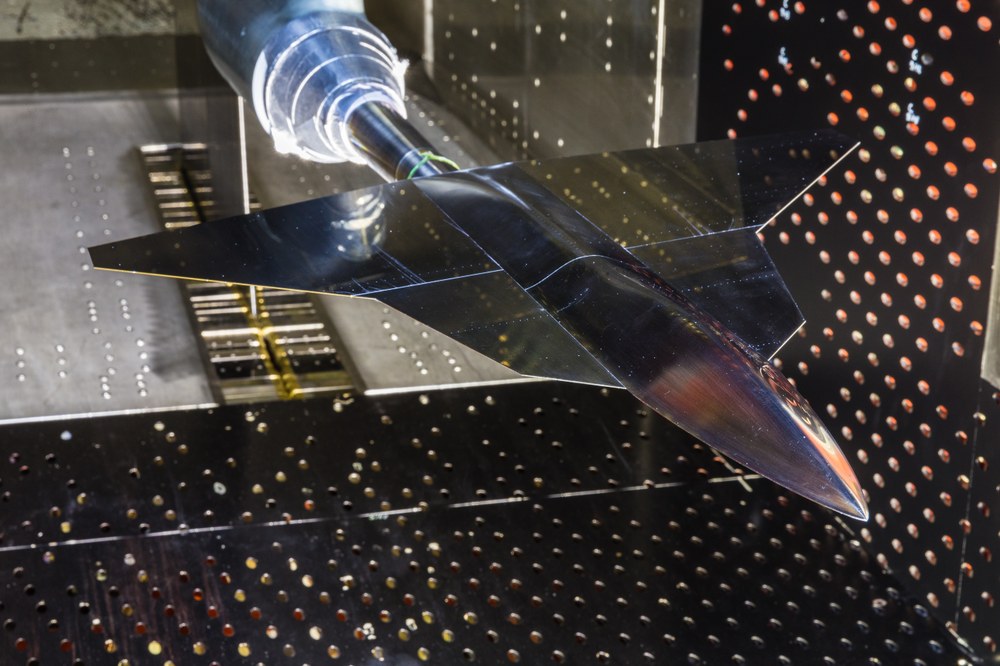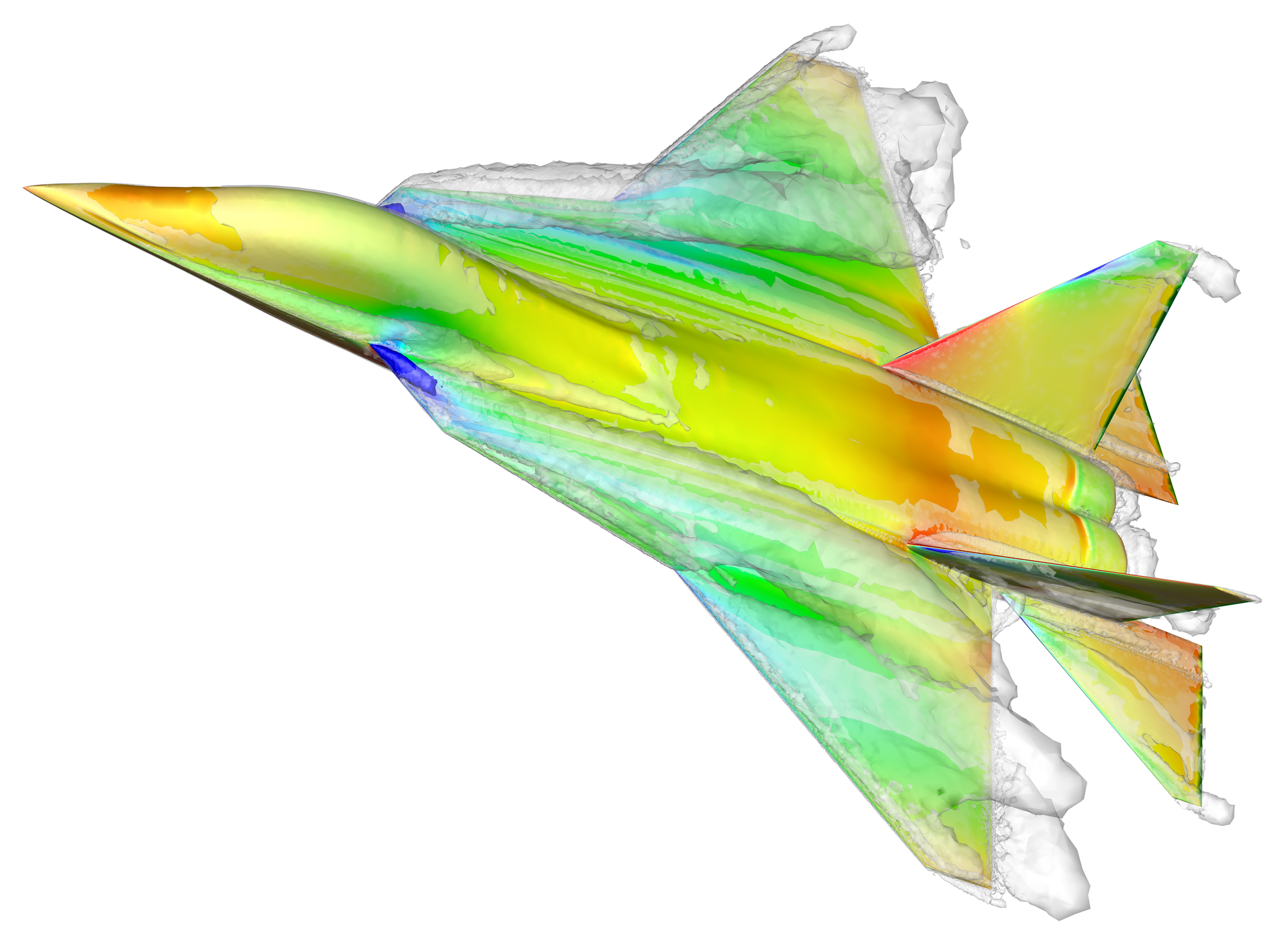Next-generation air defence
Global security has undergone radical changes in recent years, with ever-increasing calls for better air defence for Germany and Europe as a whole. So how effective is our air defence and how can we improve it in the face of new threats? To be able to assess the situation and develop new technologies, the Federal Ministry of Defence relies on the expertise of scientists. The Federal Government's aim is for DLR researchers to safeguard and expand the German Armed Forces' ability to analyse and evaluate military aircraft.
How fast, how high, how efficiently and how stealthily will the next generation of fighter aircraft have to fly? What payload will they have to carry? How agile will they have to be? Should they be crewed or uncrewed? These are the kinds of questions and issues that Andreas Schütte of the DLR Institute of Aerodynamics and Flow Technology and many of his colleagues are addressing on a daily basis. They are well aware that air defence is set to become more complex than ever. As threat scenarios have changed, so too have mission types and requirements for military aircraft. "For us researchers, it is not about developing a single combat aircraft or a single technology," says Schütte. "Instead, we want to further develop our scientific methods and processes so that the German Federal Ministry of Defence can use our expertise to evaluate and assess the potential of future aircraft."

DLR

DLR
Virtual model of a fighter aircraft
The researchers' toolbox is made up of methods and processes, ranging from developing computational methods and structural models to constructing a computing network, carrying out the calculations or an experiment and, last but not least, assessing the results. DLR has just completed the large interdisciplinary project Diabolo, where researchers designed the Future Fighter Demonstrator (FFD), a virtual fighter aircraft.

DLR
"We are working on the assumption that close air combat will become less critical, as modern weapons allow engagement at long ranges," explains Schütte. "As a result, supersonic flight performance will become increasingly important, while agility remains key to improving survivability." Aircraft should be able to reach the operational area quickly and leave again swiftly after completing the mission. Military aircraft must be able to fly at subsonic and supersonic speeds at altitudes between zero and 15 kilometres, while demonstrating extreme agility and achieving angles of attack up to 45 degrees.
Robust, agile, connected and invisible
The greater the speed and agility of a fighter aircraft, the more compact it has to be and the higher the load that the wings, for example, have to be able to withstand. The engines play a key role in this. Integrating them in military design is much more complex than in civilian design because they have to be able to operate over a much wider speed range. They are integrated into the airframe to minimise visibility of the rotating fans.
The payload also plays a role, and, very importantly, the aircraft should be detected by the enemy as late as possible. The Diabolo project has made great progress with this, examining radar, infrared and acoustic signatures. The researchers have also improved upon their simulation tools by comparing them with the results of wind tunnel experiments.
Networking, new information technologies, intelligent data processing and secure real-time communications will all play an essential role in the air defence systems of the future. The follow-up project WingMates, led by Andreas Schütte, is looking not only at individual systems, as in the Diabolo project, but also at aircraft acting as a team – that is a network of fighter aircraft. Schütte is well acquainted with the requirements of the German Armed Forces: "In future, air forces will rely on combinations of digitally connected, semi-autonomous, crewed and uncrewed platforms. WingMates is investigating aircraft that meet these requirements."
Participants in the Diabolo project
From research:
- DLR Institute of Aerodynamics and Flow Technology
- (project coordination)
- DLR Institute of Aeroelasticity
- DLR Institute of Propulsion Technology
- DLR Institute of Flight Systems
- DLR Microwaves and Radar Institute
- DLR Institute of System Dynamics and Control
- DLR Remote Sensing Technology Institute
- DLR Institute for Software Technology
- DLR Institute of Lightweight Systems
- DLR Institute of System Architectures in Aeronautics
- DLR Systemhaus Technik
- German-Dutch Wind Tunnels (DNW)
From industry:
Combining crewed and uncrewed systems
European air forces will have to renew or replace their aircraft fleets in the foreseeable future. The necessary changes range from the modernisation of existing weapon systems like the Eurofighter to the introduction of the Next Generation Weapon System (NGWS) under the German-French-Spanish Future Combat Air System (FCAS) programme, Europe's most important multinational armaments project. The NGWS is aimed at finding solutions for a future air defence system that consists of a combination of different flying vehicles interacting optimally with each other within a defence system. It encompasses the research work of Andreas Schütte and his colleagues from ten DLR institutes, as well as industry partners.
The projects also involve collaboration with industry partners to improve understanding of the aerodynamic or structural interaction of individual components on the aircraft, their effects and flow physics, the prediction of signature properties, the development of flight controllers, as well as suitable materials and construction methods. "Our close collaboration with DLR has been an excellent opportunity to investigate phenomena such as the influence of complex vortex aerodynamics, sloshing effects inside the aircraft tanks, options for reducing sources of noise on the aircraft to improve stealth, and to further develop our simulation tools. This is also our chance to compare the results of existing methods and processes with those of independently developed procedures," says Wolfgang Pecher of Airbus Defence and Space, who were involved in Diabolo, adding: "We look forward to continuing our involvement in the WingMates project, which is proving to be a great success."
The ever-improving scientific expertise in technologies related to military applications can be decisive in the event of a battle. Andreas Schütte is convinced: "Here, too, we as researchers are fulfilling our mission of ensuring the Ministry of Defence's assessment capability, supporting the German Armed Forces and strengthening Germany as a prime location for industry in a tried-and-tested close exchange."
Related links:
Project Website Future Fighter Demonstrator
An article by Yvonne Buchwald from the DLRmagazine 175


